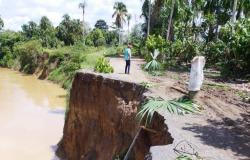Córdoba has registered between January and May 2024 a total of 110 cases of infectious erythema or megaloerythema, also known as slap virus, a contagious disease caused by parvovirus B19 and which is mild.
In Andalusia, 1,344 cases have been recorded in that period, more than 253.6% more than in the same period in 2023 when 380 were registered, which represents “a significant increase.”
This is recognized by sources from the Ministry of Health and Consumer Affairs of the Government of Andalusia when asked by Europe Press. By province, Almería has registered a total of 105 cases between January and May 2024, compared to the 44 recorded in the same period of 2023, which means 138.6% more; Cádiz, 233 cases in 2024, 72 in 2023 (+223.6%); Cordoba 110 cases in 2024, 33 in 2023 (+233.3%); Granada, 304 cases in 2024, 40 in 2023 (+660%); Huelva, ten cases in 2024, twelve cases in 2023 (-16.6%); Jaén, 150 cases in 2024, fourteen in 2023 (+971.4%); Malaga, 281 cases in 2024, 86 in 2023 (+226.7%); Seville, 151 cases in 2024, 79 in 2023 (+91.14%), according to the breakdown offered by Catalina García’s department.
Erythema infectiosum is a disease that is generally mild (there are no records of admissions for this pathology in Andalusia in 2024), but very contagious, which is transmitted through saliva droplets emitted when speaking, coughing or sneezing.
It mainly affects children, although adults can also contract it. The most distinctive feature of this infection is a reddish rash on the cheeks that appears after the first symptoms of the disease.
This disease occurs in two phases: a first of incubation and initial symptoms and a second of eruption. During the first, the patient can spread the disease. Common symptoms include headache, nasal congestion, malaise and fever, although the latter may not occur in all cases.
The second is characterized by the appearance of a reddish rash on the cheeks, which can extend to the trunk and extremities. However, in this phase the disease, when it becomes visible, is no longer contagious. The skin lesions usually disappear within a week, although the rash may flare up over several weeks due to factors such as exposure to sunlight, heat, or physical activity.
The Ministry of Health and Consumer Affairs recommends that the population “extremely” take hygiene measures, such as washing hands frequently and covering the mouth and nose when coughing or sneezing to prevent the spread of both this and other viruses. Also, remember that this disease is cyclical, that is, “there are years in which more cases occur and others less.”






